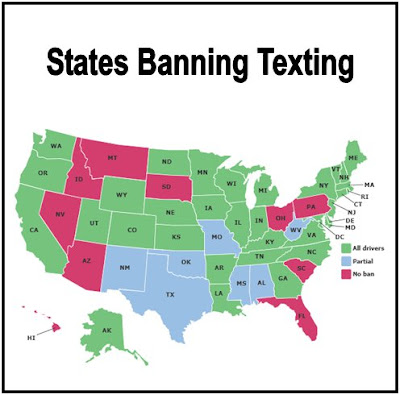Technology News Articles Biography
Governor Kaine later created an eight-member panel, including former United States Secretary of Homeland Security Tom Ridge, to review all aspects of the Virginia Tech massacre, from Cho's medical history to the school's widely criticized delay in warning students of danger and locking down the campus after the bodies of Cho's first two victims were discovered.[85] In August 2007, the panel concluded, among more than 20 major findings, that the Virginia Tech Police Department "did not take sufficient action to deal with what might happen if the initial lead proved false".[1] The panel made more than 70 preventative recommendations, directed to colleges, universities, mental health providers, law enforcement officials, emergency service providers, law makers and other public officials in Virginia and elsewhere. While the panel did find errors in judgment and procedure, the ultimate conclusion was that Cho himself was responsible for his own actions, and to imply that anyone else was accountable "would be wrong." The Review Panel validated public criticisms that university officials erred in "prematurely concluding that their initial lead in the double homicide was a good one," and in delaying a campus-wide notification for almost two hours.[1] The report analyzed the feasibility of a campus lockdown and essentially agreed with police testimony that such an action was not feasible. The report concluded that the toll could have been reduced if the university had made an immediate decision to cancel classes and a stronger, clearer initial alert of the presence of a gunman.[1]
The incident also caused Virginia Commonwealth elected officials to re-examine gaps between federal and state gun purchase laws. Within two weeks, Governor Kaine had issued an executive order designed to close those gaps (see Gun politics debate, below). Prompted by the incident, the federal government passed the most significant gun control law in over a decade.[86] The bill, H.R. 2640, mandates improvements in state reporting to the National Instant Criminal Background Check System (NICS) in order to halt gun purchases by criminals, those declared mentally ill, and other people prohibited from possessing firearms and authorizes up to $1.3 billion in federal grants for such improvements.[87] Both the Brady Campaign to Prevent Gun Violence and the National Rifle Association supported the legislation.[88] The measure passed the United States House of Representatives on a voice vote on June 13, 2007. The Senate passed the measure on December 19, 2007. President Bush signed the measure on January 5, 2008.[87] On March 24, 2008, the U.S. Department of Education announced proposed changes in the regulations governing education records under the Family Educational Rights and Privacy Act (FERPA). Certain of the changes address issues raised by the Virginia Tech incident and are intended to clarify for schools the appropriate balance to strike between concerns of individual privacy and public safety.[89]
Governor Kaine later created an eight-member panel, including former United States Secretary of Homeland Security Tom Ridge, to review all aspects of the Virginia Tech massacre, from Cho's medical history to the school's widely criticized delay in warning students of danger and locking down the campus after the bodies of Cho's first two victims were discovered.[85] In August 2007, the panel concluded, among more than 20 major findings, that the Virginia Tech Police Department "did not take sufficient action to deal with what might happen if the initial lead proved false".[1] The panel made more than 70 preventative recommendations, directed to colleges, universities, mental health providers, law enforcement officials, emergency service providers, law makers and other public officials in Virginia and elsewhere. While the panel did find errors in judgment and procedure, the ultimate conclusion was that Cho himself was responsible for his own actions, and to imply that anyone else was accountable "would be wrong." The Review Panel validated public criticisms that university officials erred in "prematurely concluding that their initial lead in the double homicide was a good one," and in delaying a campus-wide notification for almost two hours.[1] The report analyzed the feasibility of a campus lockdown and essentially agreed with police testimony that such an action was not feasible. The report concluded that the toll could have been reduced if the university had made an immediate decision to cancel classes and a stronger, clearer initial alert of the presence of a gunman.[1]
The incident also caused Virginia Commonwealth elected officials to re-examine gaps between federal and state gun purchase laws. Within two weeks, Governor Kaine had issued an executive order designed to close those gaps (see Gun politics debate, below). Prompted by the incident, the federal government passed the most significant gun control law in over a decade.[86] The bill, H.R. 2640, mandates improvements in state reporting to the National Instant Criminal Background Check System (NICS) in order to halt gun purchases by criminals, those declared mentally ill, and other people prohibited from possessing firearms and authorizes up to $1.3 billion in federal grants for such improvements.[87] Both the Brady Campaign to Prevent Gun Violence and the National Rifle Association supported the legislation.[88] The measure passed the United States House of Representatives on a voice vote on June 13, 2007. The Senate passed the measure on December 19, 2007. President Bush signed the measure on January 5, 2008.[87] On March 24, 2008, the U.S. Department of Education announced proposed changes in the regulations governing education records under the Family Educational Rights and Privacy Act (FERPA). Certain of the changes address issues raised by the Virginia Tech incident and are intended to clarify for schools the appropriate balance to strike between concerns of individual privacy and public safety.[89]
Technology News Articles
Technology News Articles
Technology News Articles
Technology News Articles
Technology News Articles
Technology News Articles
Technology News Articles
Technology News Articles
Technology News Articles
Technology News Articles
Technology News Articles
Technology News Articles
Technology News Articles
Technology News Articles
Technology News Articles
Technology News Articles
Technology News Articles
Technology News Articles
Technology News Articles
Technology News Articles

No comments:
Post a Comment